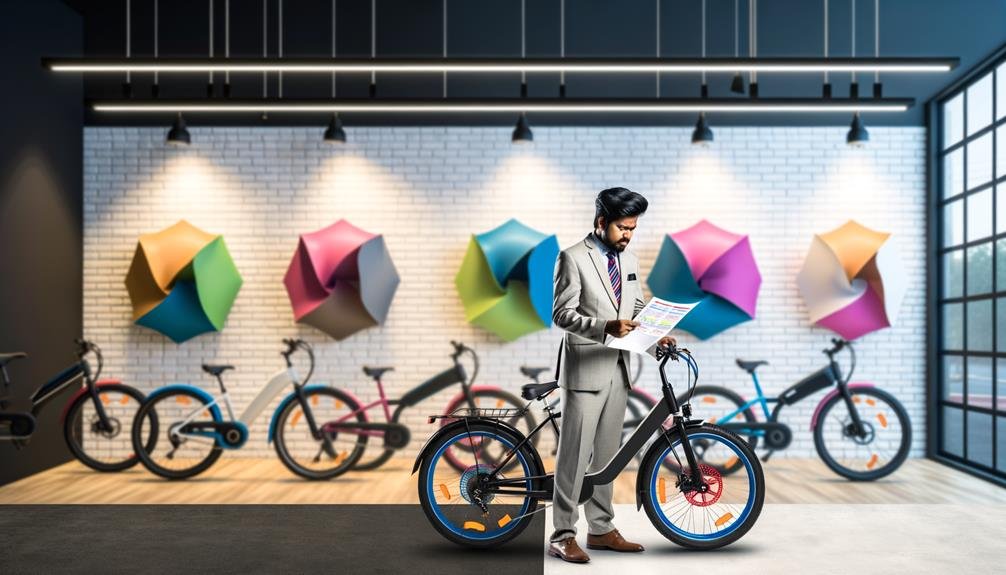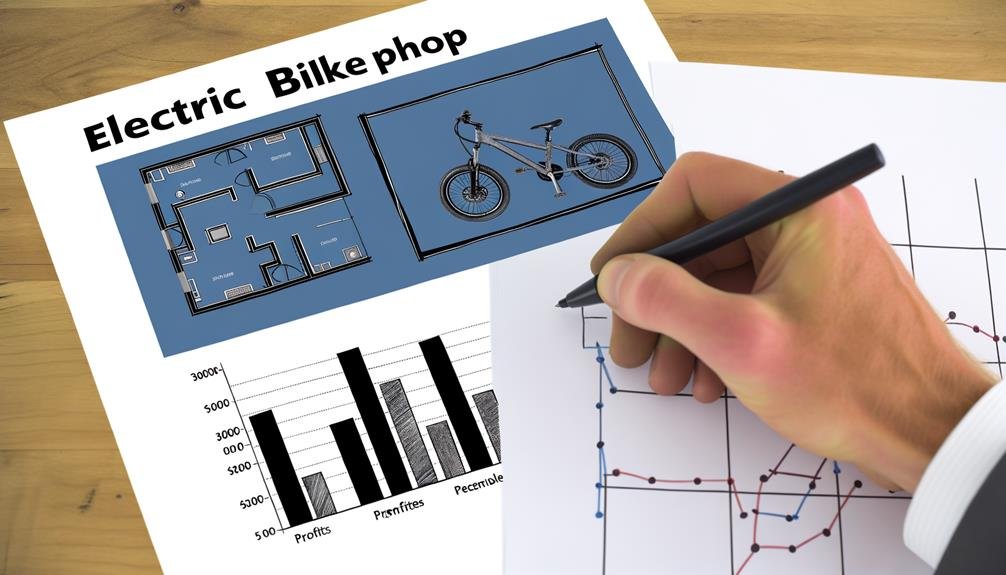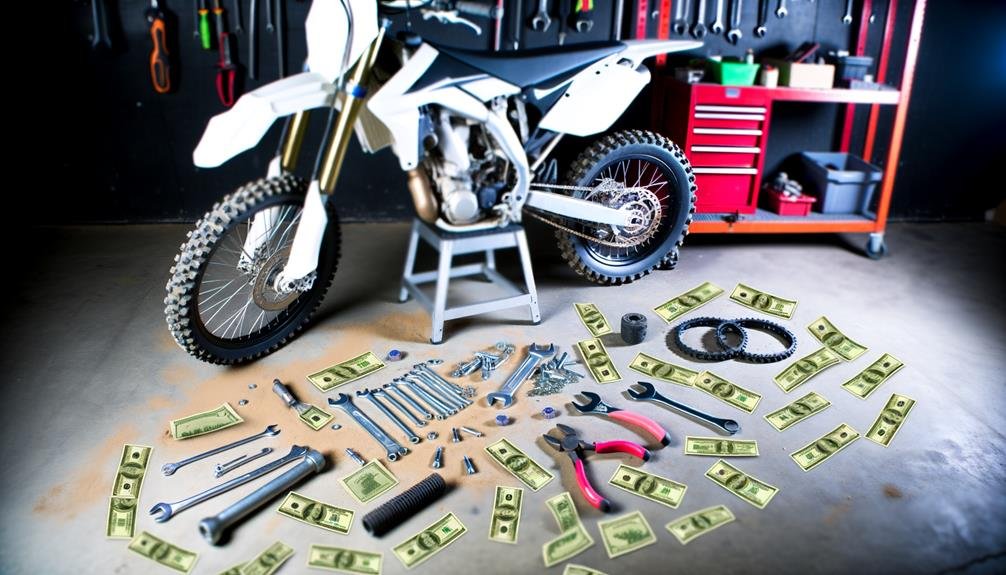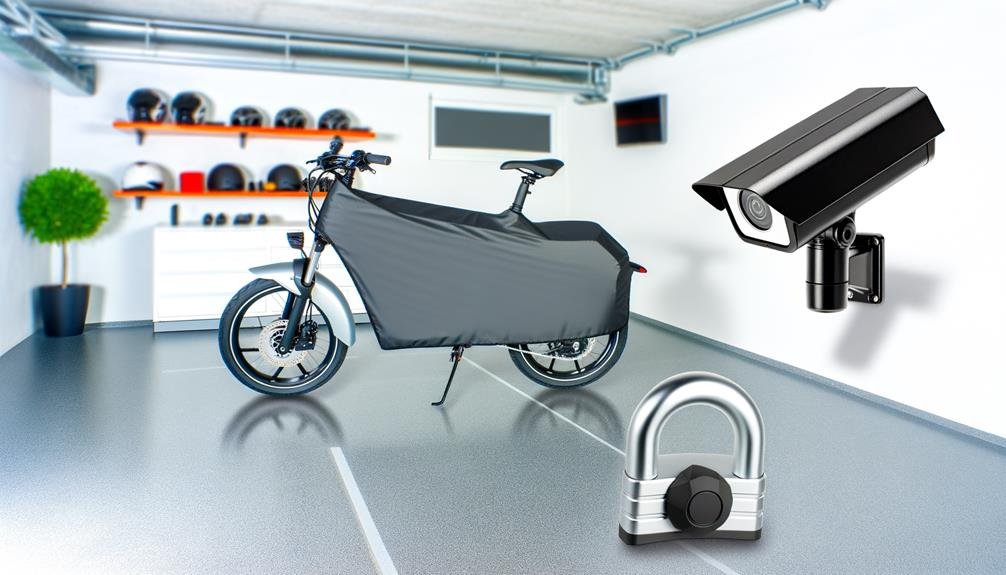Charles Miller is a veteran bike enthusiast with over 12 years of experience dealing with bikes as a mechanic. Despite immense love and expertise for...
In the fast-paced world of technology, we've seen the rise of electric bikes amidst the decline of traditional bicycles. As we find ourselves in this crossroads of innovation and tradition, you may be wondering how you can tap into this burgeoning market by becoming an electric bike dealer.
It's a process that requires careful planning, a thorough understanding of the market, and a keen business acumen. We're about to explore the steps and considerations involved in this venture, offering valuable insights that'll guide you on this exciting journey.
Who knows? By the end, you might find yourself well on the path to opening your very own electric bike dealership.
- Key Takeaways
- Understanding the E-Bike Market
- Financial Considerations for Dealerships
- Choosing the Right E-Bike Brand
- Meeting Brand Requirements
- Applying for Dealership Opportunities
- Preparing Your Business Plan
- Securing a Suitable Location
- Marketing Your E-Bike Dealership
- Maintaining Successful Dealer Partnerships
- Frequently Asked Questions
- Conclusion
Key Takeaways
- E-bike dealerships offer opportunities for increased income, low overheads, and a flexible work style.
- When considering a dealership, it is important to evaluate financial considerations such as initial investment costs, expected profit margins, ongoing financial obligations, and available financing options.
- Choosing the right e-bike brand involves scrutinizing performance, considering brand reputation, familiarizing with industry leaders, evaluating features through test rides, and assessing market trends.
- Evaluating e-bike performance includes testing different brands, assessing speed and acceleration, evaluating battery life, ensuring a smooth and comfortable ride, and staying updated on customer preferences and upcoming trends.
Understanding the E-Bike Market
Delving into the e-bike market offers us a world of opportunities, with the potential for increased income, low overheads, and a flexible work style that's perfect for expanding bike businesses. This vibrant market is ripe with dealership opportunities, often presenting no royalty or franchise fees and minimal credit risks, making it an attractive venture for us.
As we explore this avenue, we're not just becoming dealers; we're promoting a lifestyle that supports health and wellbeing. This factor alone is a significant draw for customers, and with the added bonus of flexible packages and easy set-up options, we're sure to attract a diverse clientele.
The benefits don't end there. We'll have immediate cash flow opportunities, high traffic locations for selling or renting our electric bikes, and striking promotional materials to lure customers. We'll also gain access to the latest designed e-bike models, abundant supplies of parts and accessories, fast and timely order fulfillment, attractive profit margins, and incomparable wholesale pricing.
Embracing the e-bike market means we're not just expanding our business—we're becoming part of a community that values healthy living and sustainable transportation. Let's seize this opportunity and ride into a prosperous future.
Financial Considerations for Dealerships
As we turn our attention to the financial aspects of running an electric bike dealership, there are several key components to consider.
Firstly, initial investment costs are a crucial aspect of setting up a dealership. This includes the procurement of inventory, which involves carefully selecting the electric bikes that will be sold. Additionally, dealership setup costs must be taken into account, such as securing a space to operate the dealership and outfitting it with the necessary equipment and furnishings.
Next, it is important to examine expected profit margins. This will provide a clear picture of the potential returns that can be expected from running the dealership. By analyzing the pricing strategies and market demand, dealerships can determine the profit margins they can achieve and adjust their business plans accordingly.
Lastly, ongoing financial obligations must be considered to sustain a successful dealership. This includes inventory financing, where funds are needed to purchase new inventory as demand requires. Operational costs, such as rent, utilities, and staffing, must also be factored in to ensure the dealership can continue to operate efficiently.
Initial Investment Costs
Navigating the financial terrain of starting an electric bike dealership requires careful consideration of the initial investment costs, including franchise fees, startup inventory, and operating expenses. Understanding startup costs is crucial as it affects your financial planning and potential return on investment.
We must also be thorough in evaluating financing options, which may include traditional loans, partnerships, or even crowdfunding. It's equally essential to factor in marketing and advertising costs to attract customers. Moreover, researching tax incentives or deductions that may be available can help offset some of these expenses.
We're in this together, making smart, informed decisions to ensure a successful venture into the electric bike dealership business.
Expected Profit Margins
Having laid a solid foundation in understanding the initial investment costs, let's now turn our attention to the potential financial returns, particularly the expected profit margins in the electric bike dealership business.
We're seeing an exciting e bike market growth, and this trend is expected to raise profit margins. By implementing effective customer retention strategies, we can build a loyal customer base, driving repeat business and increasing profitability.
We can also maximize our revenue streams, not only through sales of electric bikes but also by offering accessories, maintenance services, and warranties. With the right balance between operational expenses and the manufacturer's pricing structure, our profit margins can be significantly enhanced.
This is an opportunity for us to create a thriving, successful dealership.
Ongoing Financial Obligations
Diving into the realm of ongoing financial obligations, it's essential that we're mindful of the continuous costs associated with running an electric bike dealership. We're not just talking about the initial investment; the true challenge lies in managing expenses and long term financial planning.
Consider:
- Evaluating profitability – This is crucial to ensure your business thrives.
- Assess the cost of inventory against potential sales revenue.
- Consider the rate at which you'll need to sell to break even.
Managing expenses – Beyond the initial investment, operational costs persist.
- Rent, utilities, and maintenance are recurrent.
- Marketing expenses are necessary to attract customers.
Long term financial planning – Anticipate future financial needs.
- Understand financing options and potential interest costs.
- Estimate potential tax obligations and financial reporting requirements.
Choosing the Right E-Bike Brand
As we move forward in our exploration of electric bike dealerships, it's essential for us to scrutinize the performance of various e-bike brands. Not all bikes are created equal, and understanding this distinction is a crucial step in our journey.
A brand's reputation can greatly influence customer decisions, and therefore, it's important for us to familiarize ourselves with the market leaders in this industry.
Evaluating E-Bike Performance
So, how do we choose the right e-bike brand for our dealership, considering performance and customer preference? Evaluating e-bike performance is paramount. We must identify market trends, consider brand selection, and make an informed decision.
- Performance Evaluation: We need to test ride different brands, understand their features, and gauge their performance.
- Speed: How quickly does the e-bike accelerate?
- Battery Life: How long does the battery last on a single charge?
- Comfort: Is the ride smooth and comfortable?
- Market Trends: Understanding current customer preferences and upcoming trends is essential.
- Brand Selection: Suitability of the brand for our dealership is critical. We need to consider brand reputation, after-sale support, and the potential for profitability.
Understanding Brand Reputation
Having evaluated the performance of various e-bikes, let's now turn our attention to understanding the reputation of potential e-bike brands for our dealership.
Key to this understanding is customer satisfaction, brand reliability, and market presence. We must delve into customer reviews and the brand's history, which often reveal the level of satisfaction and the reliability customers have come to associate with the brand.
We're also interested in the extent of the brand's market presence. A strong market presence is indicative of demand and customer interest.
Lastly, we must assess their customer service and support. This way, we ensure that our dealership will offer not only quality e-bikes, but also excellent after-sales service to our customers.
Meeting Brand Requirements

To establish a successful electric bike dealership, it's essential we meet the brand requirements, setting a solid foundation for our business partnership. Delving into branding strategies, contract negotiations, and dealership training will equip us with the necessary tools to become an authorized dealer.
- Branding Strategies: We need to align with the brand's philosophy and identity. This includes the brand's:
- Vision and mission
- Aesthetic and design guidelines
- Marketing and sales strategies
- Contract Negotiations: We must understand and agree to the terms and conditions set forth in the contract, such as:
- Pricing policies
- Warranty and service agreements
- Minimum order quantities
- Dealership Training: It's crucial we're well-versed in the product, its technical aspects, and sales techniques. This includes:
- Product knowledge and features
- Customer service standards
- Sales process and techniques
Applying for Dealership Opportunities
When we explore dealership opportunities with companies like Big Cat USA, we unlock potential for increased cash income and enjoy the benefits of low overhead. By understanding dealership requirements, we position ourselves for success. It's crucial to meet the basic criteria, such as having a physical store of at least 800 square feet, legal authorization to sell products, and a liquid capital of at least $5,000.
Finding suitable locations also plays a pivotal role. A well-selected location can provide a significant boost to our dealership, making it a community hub for electric bike enthusiasts. We need a location that's easily accessible, with ample parking and a potential customer base passionate about electric bikes.
Equally important are marketing strategies for dealerships. A dealership isn't just about selling bikes; it's about creating a community. With Big Cat USA's flexible packages, we're given optimal support, training, and marketing materials, enabling us to effectively reach out to our customers.
Preparing Your Business Plan

Let's dive into crafting a solid business plan, a vital step that identifies our target market, analyzes local demand and competition, and outlines our initial investment and operational costs for the electric bike dealership. A well-crafted business plan can be the difference between success and failure. It serves as a roadmap, guiding us through the challenges of establishing and running our dealership.
Understanding market trends is essential. We need to identify potential customers and their preferences. Our competitor analysis will allow us to determine where we stand and how we can carve our niche in the market.
Our business plan should include:
- Market Analysis
- Understanding market trends
- Identifying our target market
- Competitor Analysis
- Analyzing the competition
- Identifying their strengths and weaknesses
- Financial Plan
- Outlining the initial investment and operational costs
- Developing a pricing strategy
Securing a Suitable Location
Finding the perfect location for our electric bike dealership is a critical next step in our journey towards successful entrepreneurship. Location demographics play a significant role in determining our success. We need to consider factors like population density, income levels, and potential customer interest. Sourcing a location with a high number of environmentally-conscious, health-focused individuals will boost our dealership's potential.
Lease negotiations are another crucial factor. We want to secure a lease that's both affordable and flexible. It's vital to work with a knowledgeable commercial real estate agent to ensure we're getting the best deal. Remember, a great lease agreement can significantly impact our bottom line.
Lastly, we mustn't overlook zoning regulations. These laws dictate what activities can take place in certain areas. Ensuring our chosen location is zoned for a bike dealership avoids unnecessary legal complications down the line.
Securing the perfect location for our electric bike dealership isn't just a matter of convenience; it's a strategic move that can set us up for success. We're in this together, and with careful planning, we'll make our dealership a cherished part of the local community.
Marketing Your E-Bike Dealership

Embarking on a marketing journey for our E-Bike dealership, we must highlight the lucrative benefits of partnering with renowned brands like Big Cat USA. This partnership offers low overhead, flexible work style, and no royalty or franchise fees, making it an ideal choice for our dealership.
Here are our key E bike marketing strategies:
- Building Brand Awareness:
We'll leverage Big Cat USA's strong brand recognition, ensuring our dealership stands out in the market.
- Showcase the brand in high traffic locations.
- Utilize social media platforms for promotions and updates.
- Targeting Potential Customers:
We focus on those seeking eco-friendly, cost-effective transportation solutions.
- Offer test rides to interested customers.
- Highlight the benefits of electric bikes in our promotions.
- Increasing Cash Income:
By offering Big Cat USA's unique packages, we can cater to diverse customer needs.
- Promote the 'Little Cat' and 'Big Cat' packages.
- Emphasize the immediate cash flow from selling or renting bikes.
Through these strategies, we're not simply selling bikes—we're inviting customers to join an environmentally conscious, forward-thinking community.
Maintaining Successful Dealer Partnerships
While we're effectively promoting our electric bikes and enticing customers, it's equally important that we nurture our dealer partnerships to ensure the longevity of our business. This begins with understanding dealer expectations. We must clearly comprehend what our dealers need and expect from us to thrive. Once we grasp these needs, we can tailor our services and support accordingly.
Effective communication strategies are pivotal in this process. Open, clear, and timely communication fosters a strong bond with our dealers, ensuring that they feel heard, understood, and valued. It's not merely about relaying information, but also about actively listening and responding to their feedback and concerns.
Dealer training and support should be at the forefront of our efforts. Regular, comprehensive training equips our dealers with the knowledge and skills needed to excel. By providing robust support, including marketing materials and promotional assistance, we empower them to perform at their best and achieve success.
Frequently Asked Questions
Is Selling Electric Bikes Profitable?
We've found selling electric bikes indeed profitable. Our profit margin analysis, market demand evaluation, and business sustainability insights all point to a thriving industry. It's a great addition to our business portfolio.
How Much Does It Cost to Start an Ebike Business?
We'll need to consider market research, location selection, and potential financing options when starting our ebike business. Costs can vary, but a minimum liquid capital of $5,000 is essential for initial investment.
Are Ebike Rentals Profitable?
We've found ebike rentals to be profitable, especially with smart rental marketing strategies. Costs for ebike maintenance and insurance requirements are manageable. We feel part of a green movement, providing a service people love.
Is Ebike a Good Business?
We believe the ebike business is promising. With robust industry growth, sustainability benefits, and constant technological advancements, it's a field we're excited to be part of. Together, we can thrive in this sustainable future.
Conclusion
We've journeyed together, understanding the e-bike market, sorting out finances, and choosing the right brand.
We've met stringent requirements, applied for opportunities, and chalked out a business plan.
Now, as we secure our location and market our dealership, remember, success isn't overnight.
It's a slow ride uphill, but once we're at the top, the view is worth it.
Let's keep pedaling together, maintaining our partnerships, and turning our e-bike dealership dreams into reality.

Charles Miller is a veteran bike enthusiast with over 12 years of experience dealing with bikes as a mechanic. Despite immense love and expertise for his Tacoma, he rides his Trek Ebike more. Anytime you meet him, you’ll either hear him talking about Bikes, or writing about all things bikes and cars on this blog.
More Posts


